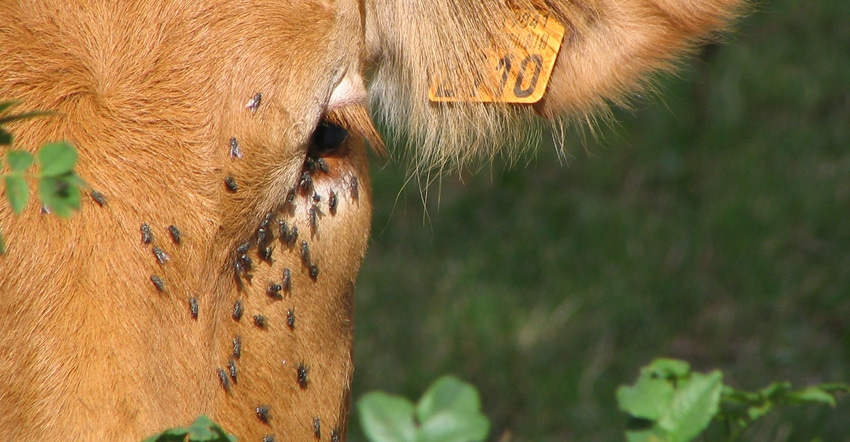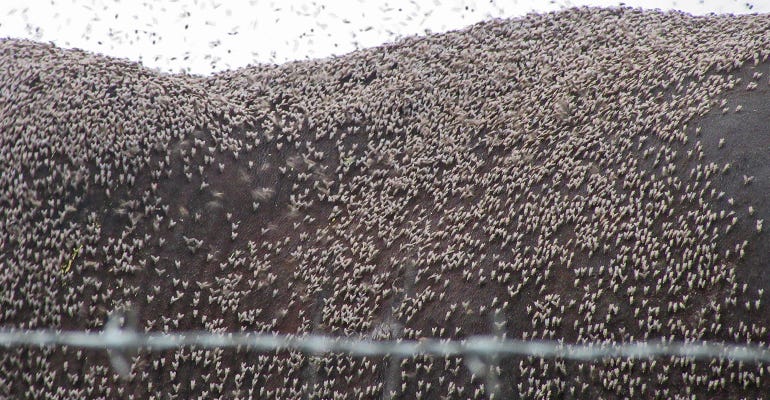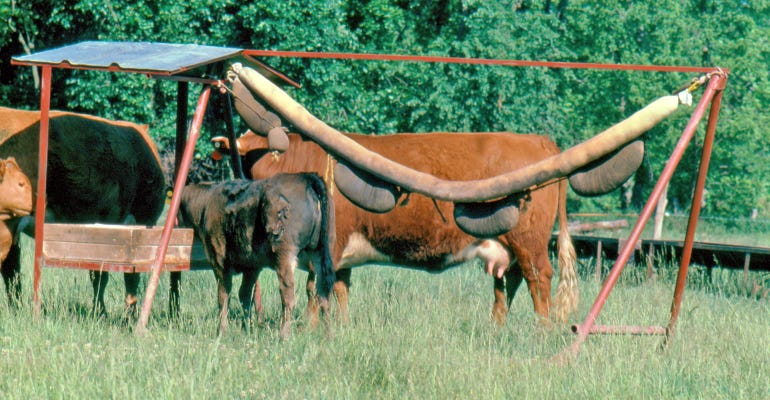June 6, 2019

Flies, especially horn flies, are starting to show up in significant numbers in Missouri beef herds.
Research shows that up to 200 horn flies per animal can be on cattle and not create an economic loss. With more than 200 horn flies, the loss of blood and being annoying results in poorer performance, says Eldon Cole, a field specialist in livestock for the University of Missouri Extension.
However, Cole says the 200-fly threshold is hard to evaluate unless you are an entomologist.

FLY OVERLOAD: When fly numbers reach more than 200 per cow, it can start affecting performance. Beef producers need to be out looking at their cows and assessing fly counts

Besides a loss in performance, blood-sucking insects transmit diseases such as anaplasmosis. Flies also are a factor in pinkeye outbreaks.
Fly control is possible on most farms, but the trick is to start early. Choose from a variety of practices such as oral larvicides, back rubs, dust bags, periodic sprays, pour-ons and insecticidal fly tags.
If you are not comfortable using pesticides, walk-through flytraps may help, Cole says. They require close observation and tend to control only 50% to 60% of the horn flies, he adds.
Resistance to some of the fly control materials exists, so Cole says to monitor which products you have used in the past few years. Keep this information available when making product selections.

FLY CONTROL: Beef producers can use treatment measures such as a dust bag to provide cows relief from flies this summer.

"Each method of control has limitations, so be persistent,” Cole says. “If a method does not keep the threshold numbers below the target, search for another treatment.”
Genetic differences in cattle attracting flies do exist, so observe them closely — both those that attract flies and those that have few flies — and consider it when making breeding stock selections.
Source: The University of Missouri Extension, which is solely responsible for the information provided and is wholly owned by the source. Informa Business Media and all its subsidiaries are not responsible for any of the content contained in this information asset.
You May Also Like




